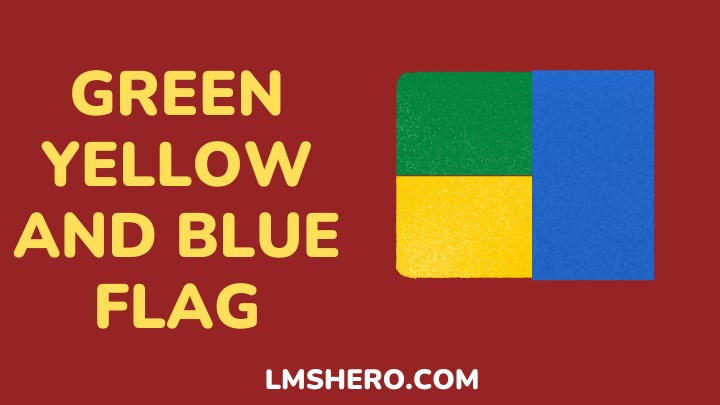Different countries use green, yellow, and blue in their flag. Each color on the flag has a significant meaning, representation, or origin to tell you about the country.
This article talks extensively about countries using green, yellow, and blue colors in their flag, and what each color on their flag represents.
Let’s dive right into it.
1. Brazil
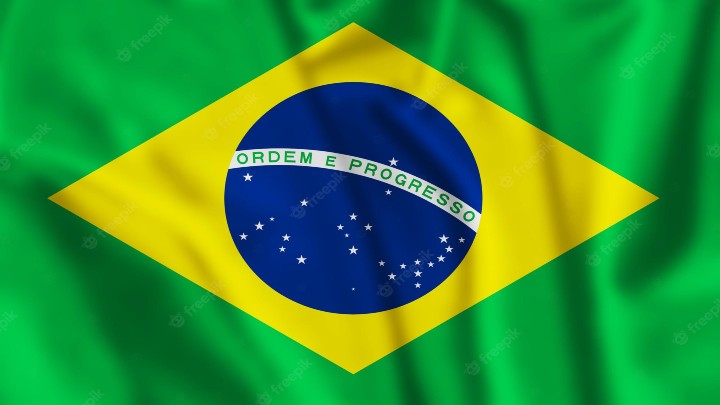
These three colors in the Brazilian flag we know today were adopted officially in 1889. The green color in the background represents the palace of Emperor Don Pedro.
While the yellow represents the palace of his wife, Maria Leopoldina. Furthermore, the blue represents the Virgin Mary, demonstrating the country’s strong Catholic roots.
2. Gabon

On August 9, 1960, the national flag of Gabon was modified after they gained independence from France. The French tricolor was dropped, and Gabon adopted the yellow, blue, and green colors.
The yellow color represents the equator that runs through the country and the sunlight that covers it. Green also represents the nation’s forest, a significant economic resource for the country.
Additionally, the blue color represents the sea and is also a reminder of the extensive coast along the South Atlantic Ocean.
3. Christmas Island
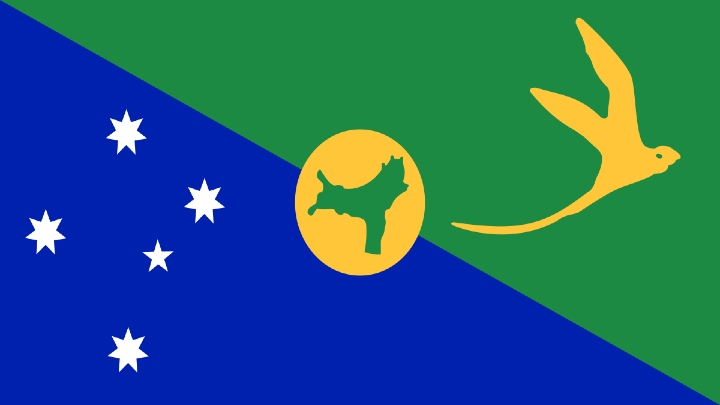
Christmas Island is an Australian external territory; the flag was chosen and adopted in a flag competition in 1986.
The competition was won by Tony Couch of Sydney, and he was also rewarded with a $100 (Australian) prize. The blue and green colors represent the abundant vegetation of the island.
The yellow color in the flag represents the island’s mining history, while the golden bosun bird is known to be the island’s symbol.
4. Rwanda
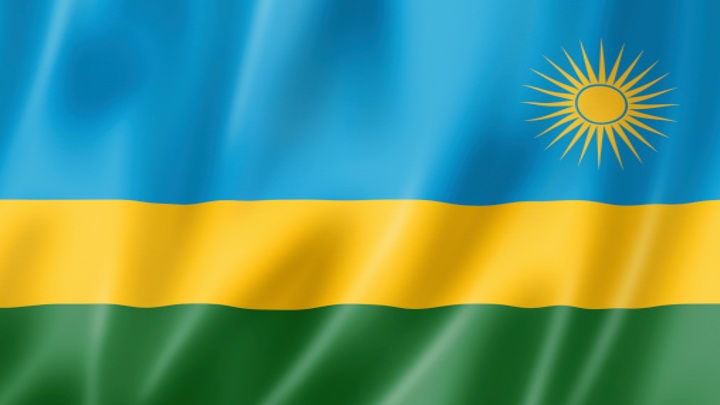
The Republic of Rwanda is located in the east-central part of Africa, and its flag was adopted on October 25, 2001. The sun is said to epitomize enlightenment and hope for the future.
Blue signifies peace and happiness in the country, while green symbolizes hope and prosperity along with flora and fauna.
The yellow, on the other hand, represents the growth and development they hope to see in the country.
5. Solomon Island
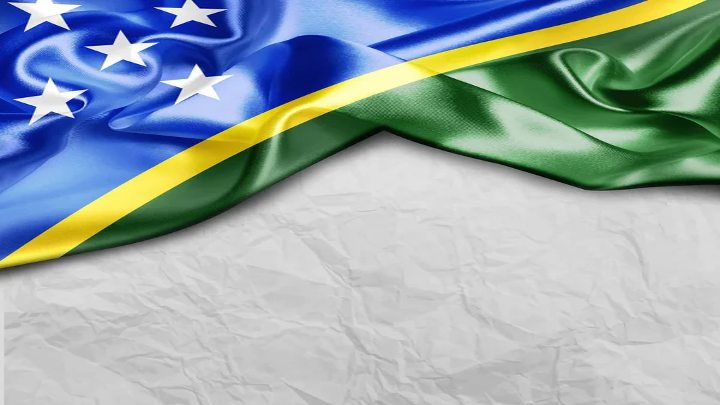
Solomon Island consists of several Pacific Oceans and is in the Oceania region. Its flag was adopted on November 18, 1977, eight months after the country gained independence.
The five white stars symbolize the five main island groups, and the blue represents the ocean surrounding the country. Furthermore, green represents the life of the land, while yellow symbolizes the sunshine on the land.
6. Mauritius
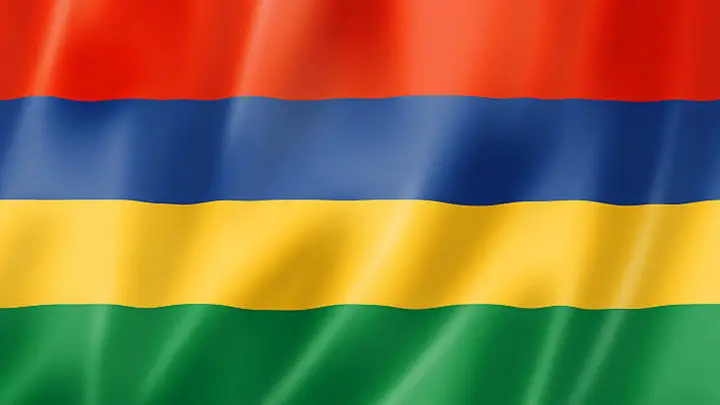
The Republic of Mauritius is a small island in the Indian Ocean off the southeast coast of Africa. Its flag was adopted after the country gained independence on March 12, 1968.
The red color represents the struggle for freedom or independence that they now have. Blue represents the Indian Ocean in the middle of which Mauritius is stationed.
The yellow represents new light, which is independence shining over the country. While green represents the land’s agriculture and its color throughout the year.
7. The Central African Republic
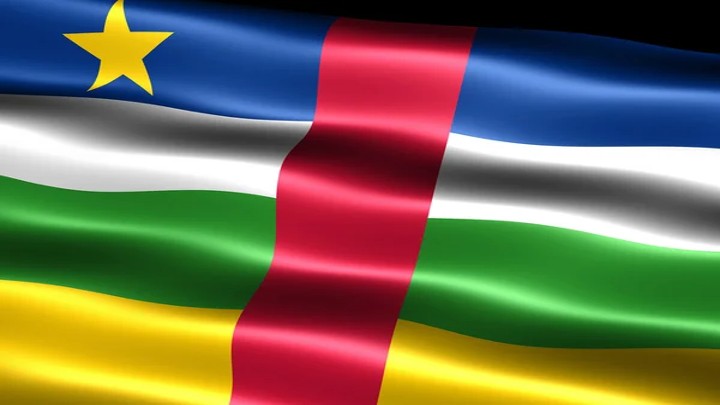
The Central African Republic is located in the middle of the African continent. Its flag was adopted in 1958 and stayed even after the country gained complete independence in 1960.
This flag symbolizes the realization that France and Africa can work together. The color blue represents liberty, grandeur, and the skies themselves.
White represents purity, equality, and candor, while green represents the country’s forests in abundance.
Yellow is said to represent the country’s savannas, while red is the blood all of humankind have running through their veins.
8. New Caledonia
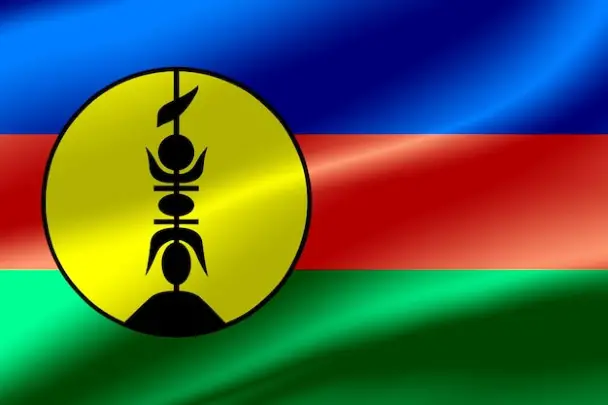
New Caledonia, also called “Novel Caledonia,” is a French-controlled country in Oceania. They were known under the French flag until 2010, when the New Caledonian Congress adopted the Kanak flag.
Green represents the territory they possess, while blue represents the sky and ocean surrounding New Caledonia.
The red color also represents the blood spilled by the Kanaks in their fight for independence and unity. And yellow, on the other hand, symbolizes the sun, and black represents the native rooftop adornment.
9. Ethiopia
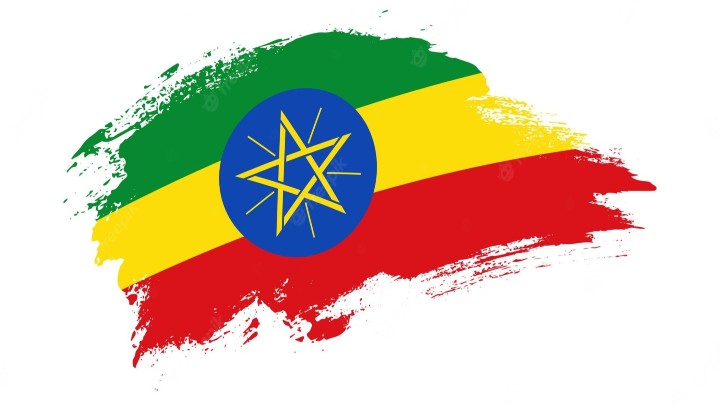
The Federal Democratic Republic of Ethiopia is a northeast African country with a national flag adopted in 1958.
The pentagram represents the unity of all Ethiopian nationalities and the bright prospect of their future. Blue represents peace, while yellow represents hope, equality, and justice.
The color red also represents the sacrifices made for freedom and equality. Additionally, the green color represents its land’s labor, development, and fertility.
10. Seychelles

The Republic of Seychelles is a country located on the African continent. Its flag was adopted on January 8, 1996, and was said to symbolize a new country moving forward into the future.
The blue color represents the sky and sea surrounding the country. Yellow symbolizes the sun that gives light and life. The red represents the people and their desire to work in unity for the future.
On the other hand, white represents social justice and harmony, and green symbolizes the land and the natural environment.
11. South Africa
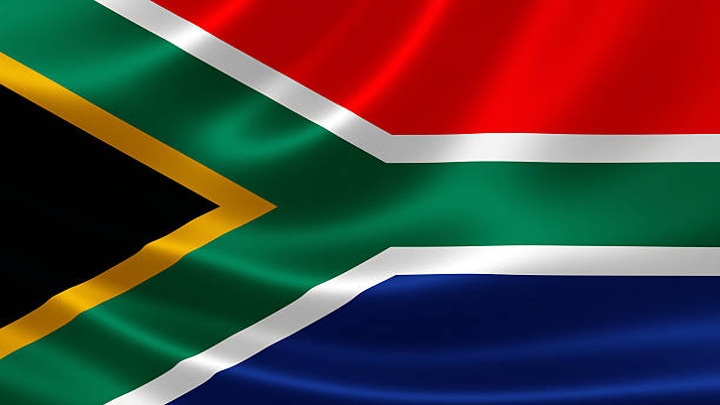
The Republic of South Africa is located in the southernmost part of the African continent, and its flag was adopted on April 27, 1994.
Green represents their territory, and red symbolizes the blood shared during conflicts. The black color represents the African black race, while white symbolizes the European people.
Yellow symbolizes gold from the land they occupy, while blue represents the sky.
12. Tanzania
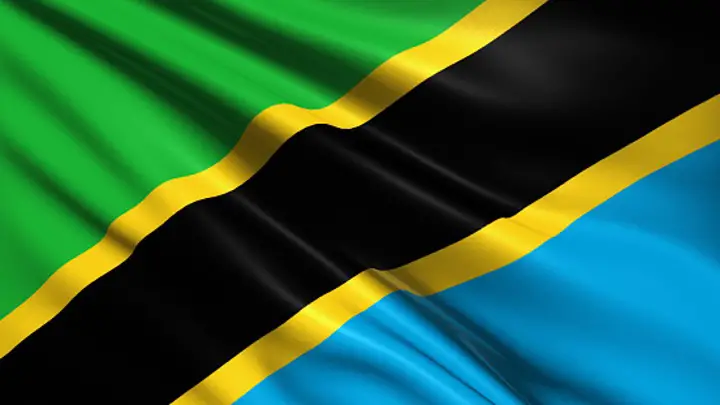
The United Kingdom of Tanzania is located in East Africa, and its flag was adopted on June 30, 1964.
Green symbolizes the agriculture and natural wonders of the land, also blue represents its lakes and rivers. While black symbolizes the people, and yellow represents the nation’s wealth.
13. Comoros
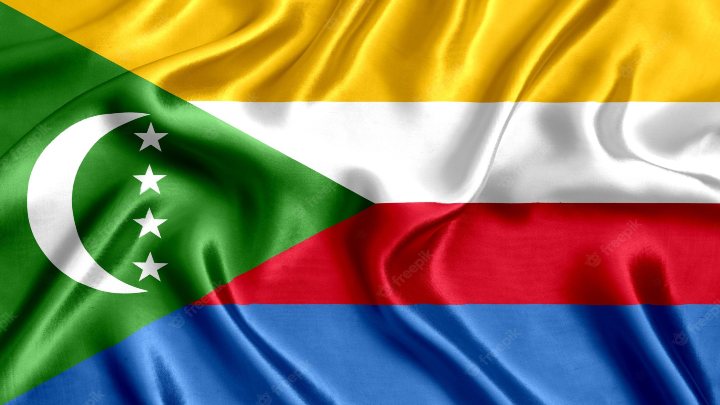
The flag of Comoros was adopted on December 23, 2001, the sixth flag change since they gained independence in 1963. Furthermore, its flag’s four colors represent the country’s four islands.
Firstly, the blue stripe stands for the island of Grand Comore, while the red stands for the island of Anjouan.
While the color yellow represents the island of Moheli, and white stands for the island of Mayette.
FAQs
Which country uses green, yellow, and blue colors on its flag is the largest?
Brazil is the largest country using these colors on its flag; it covers around 8.5 kilometers of land.
Which country using the green, yellow, and blue color flag is most populated?
Brazil is the most populated country using these colors, with an estimated population of 241 million.
How many countries have only green, yellow, and blue flags?
Five countries possess this kind of flag.
Conclusion
Countries use various colors to symbolize historical struggles, present happenings, or future goals.
Green mostly stands for the environment, yellow for resources, and blue mainly represents the ocean or sky.
I hope you enjoyed this article; if you did, you should also see why politics is important.
Thanks for reading.
